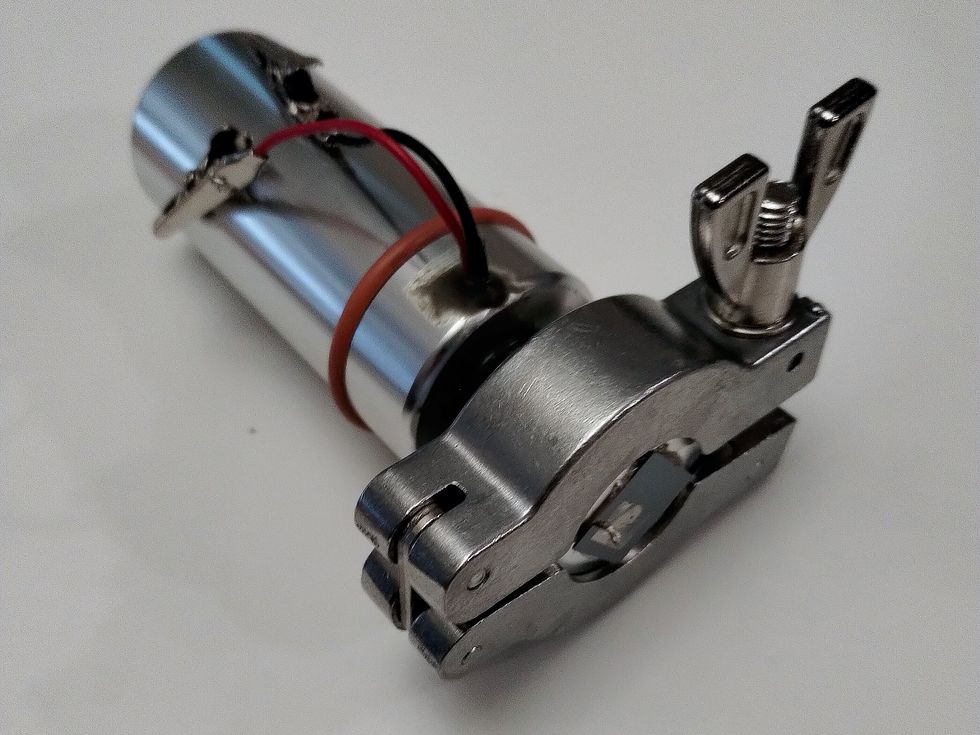Science
Startup Orbital Arc Unveils Revolutionary Satellite Thruster

A startup named Orbital Arc has announced plans to develop a new spacecraft thruster that promises to be up to 40 percent more power-efficient than existing models, while also significantly reducing fuel costs and weight. The innovative design utilizes naphthalene, a low-cost byproduct of oil refineries, enabling the thruster to weigh an eighth of the mass of traditional options. Founder Jonathan Huffman believes that this technology could revolutionize satellite operations and interplanetary missions.
Huffman describes the new thruster as a compact device, measuring approximately an inch across, yet capable of delivering the same thrust output as larger thrusters weighing several kilograms. This miniaturization could make it feasible for even the smallest low-Earth orbit satellites to utilize the technology, allowing for significant cost savings and operational efficiencies, particularly in avoiding space debris.
Innovative Engineering Behind the Thruster
Thrusters generally operate by generating and expelling plasma, which propels a spacecraft in the opposite direction. Current systems, like the popular Hall thrusters, use a magnetic field to trap electrons, which collide with noble gases like xenon to form plasma. Huffman’s approach, however, diverges from this model.
His background as a biotech consultant and a passion for science fiction led him to explore propulsion systems while designing technology for a video game. He identified a key limitation in traditional ion thrusters: increased thrust typically requires heavier thruster components. Huffman recognized that reducing thruster mass while maintaining thrust output could lead to significant advancements in propulsion technology.
The core of Orbital Arc’s design features a chip embedded with millions of micrometer-scale tips. These tips interact with naphthalene gas, causing the molecules to polarize as they pass. As they release electrons, the ions become positively charged and are propelled outwards, generating thrust. This mechanism eliminates the need for the plasma generation that traditional thrusters rely on, leading to substantial power savings.
Recent calculations indicate that the new thruster could provide a 30 to 40 percent increase in efficiency. In tests, just six of Orbital Arc’s tips produced approximately three times more ion current than a setup of 320,000 tips from a team at MIT.
From Concept to Reality: Next Steps for Orbital Arc
Currently, the prototypes developed by Orbital Arc contain only six tips, fabricated using microelectromechanical systems (MEMS) in a cleanroom environment at Oak Ridge National Laboratory. The next phase involves creating a full-scale chip version, along with the necessary components for the thruster assembly. Huffman anticipates that this will involve straightforward integration of a valve, wiring, and structural elements.
The startup aims to conduct rigorous testing, including vibration, radiation, and thermal cycling, to qualify the thruster for flight. Huffman is optimistic about having a commercial product within the next two years. He expects that small teams, such as startups and research groups, will be early adopters of the technology, even if it has not yet been flown in space.
Despite some skepticism from experts like Jonathan MacArthur at Princeton University, who emphasizes the importance of historical data in selecting propulsion systems, there is potential for missions using CubeSat technology to embrace this innovation. Other startups have seen recent success with new electric propulsion technologies, which may encourage customers to take a chance on Orbital Arc’s thrusters.
Huffman envisions a future where the integration of this lightweight thruster allows for significant reductions in spacecraft dry mass, enhancing mission capabilities and efficiency. By utilizing naphthalene, which costs around USD 1.50 per kilogram compared to USD 3,000 for xenon, Orbital Arc claims to achieve production costs at just 1 percent of traditional Hall thrusters.
While the journey from prototype to operational thruster is complex, Huffman remains committed to pushing the boundaries of propulsion technology. He aims to ultimately develop an ultra-light spacecraft bus, paving the way for ambitious missions that could redefine space exploration, including potential two-way human-rated missions to Jupiter.
-

 Science4 weeks ago
Science4 weeks agoIROS 2025 to Showcase Cutting-Edge Robotics Innovations in China
-

 Politics3 weeks ago
Politics3 weeks agoJudge Considers Dismissal of Chelsea Housing Case Citing AI Flaws
-

 Lifestyle4 weeks ago
Lifestyle4 weeks agoStone Island’s Logo Worn by Extremists Sparks Brand Dilemma
-

 World4 weeks ago
World4 weeks agoBravo Company Veterans Honored with Bronze Medals After 56 Years
-

 Health4 weeks ago
Health4 weeks agoStartup Liberate Bio Secures $31 Million for Next-Gen Therapies
-

 Health4 weeks ago
Health4 weeks agoTop Hyaluronic Acid Serums for Radiant Skin in 2025
-

 Science4 weeks ago
Science4 weeks agoArizona State University Transforms Programming Education Approach
-

 Lifestyle4 weeks ago
Lifestyle4 weeks agoMary Morgan Jackson Crowned Little Miss National Peanut Festival 2025
-

 World4 weeks ago
World4 weeks agoHoneywell Predicts Record Demand for Business Jets Over Next Decade
-

 Sports4 weeks ago
Sports4 weeks agoYamamoto’s Mastery Leads Dodgers to 5-1 Victory in NLCS Game 2
-

 Top Stories4 weeks ago
Top Stories4 weeks agoIndonesia Suspends 27,000 Bank Accounts in Online Gambling Crackdown
-

 Sports4 weeks ago
Sports4 weeks agoMel Kiper Jr. Reveals Top 25 Prospects for 2026 NFL Draft









